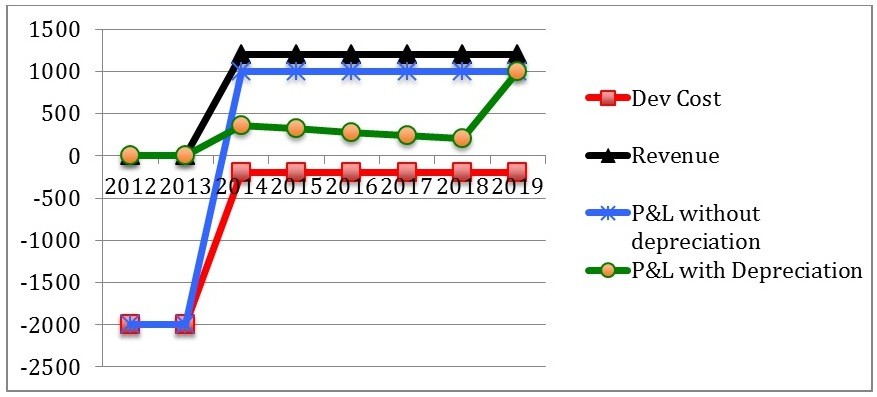Capitalize on investment losses
Post on: 17 Июль, 2015 No Comment

Tax-loss harvesting with ETFs can lighten tax burdens
When markets are volatile and arent offering much opportunity to make money, its a good time to enact a tax loss selling strategy using ETFs to lighten your clients tax burden.
The concept behind this strategy, tax-loss harvesting, is simple: an investor deliberately sells securities at a loss in order to realize capital losses. Net capital losses are calculated exactly the same way as net capital gains. Fifty percent of the net capital loss is eligible to be used as a potential deduction when filing a personal tax return.
Many investors are hesitant to sell securities at a loss because tax-loss-selling rules prevent them from reinvesting in the same security for at least 30 days from when its sold, potentially resulting in missed upside opportunity.
But investors arent entirely helpless during a loss period. ETFs allow them to capitalize on their market losses and reduce their past, present and future taxable income (see sidebar, CRA rules). Returning some money to clients during a period of negative market returns can be powerful consolation.
CRA Rules
used in the current tax year; or
carried forward indefinitely to offset future capital gains.
Sell the stock, buy the index
ETFs can be used to maintain broad market or sector exposure while harvesting tax losses from individual equity positions.
Index-tracking ETFs typically offer a high degree of equivalent market beta to mutual funds or stocks. An investor could sell any of those securities at a capital loss for tax purposes, if applicable, to offset capital gains from the previous three years, or apply to current or future gains.
An investor could then purchase an ETF that invests in the same or similar asset classor even the same index with a similar risk/ return profile and correlation to the original security.That way, he or she can harness capital losses to reduce taxable income while maintaining market exposure when prices are anticipated to rise.
Heres how it works.
Strategy one
Capital-loss harvesting On Manulife
Manulife Financial has traditionally been a heavyweight in the Canadian financial services indexS&P/TSX Capped Financials Indexrepresenting around 6.25% of the market capitalization of the index, tracked by the iShares S&P/TSX Capped Financials Index Fund (XFN).
The stock is even weightier in the Horizons Enhanced Income Financials ETF (HEF), with an initial portfolio weight of 8.33%.
Note that this ETF uses a covered-call strategy on all stock holdings (namely, selling a call option while simultaneously holding an equivalent position in the underlier), which may not be suitable for all clients.
From January 1, 2011 to October 31, 2011, Manulife stock lost 23.27% of its value. Investors may be in an unrealized capital loss position on this stockparticularly on a multi-year horizon where Manulife lost 54.21% from November 30, 2008 to November 30, 2011, but still maintained a correlation of 0.81 to the return of the S&P/ TSX Capped Financials Index.
Selling Manulife stock at a loss and making an investment in XFN or HEF could allow investors to realize a capital loss for tax-planning purposes. At the same time, they could remain invested in ETFs that will benefit from a rise in Manulifes stock priceas well as other financial services companiesover the 30-day period when theyd be prohibited from re-buying Manulife.
This strategy is ideal if the investor is bullish on Manulife over the longer term. The main idea is to get indirect exposure to the stock during the 30-day period when the investor cannot repurchase the stock without negative tax repercussions.

Strategy two
Capital-loss harvesting on RIM
RIM has lost a lot of ground, too: The stock is down more than 65% on a three-year basis, ending November 30, 2011, and fell even further in December. However, the stock still constitutes nearly 15% of the S&P/TSX Capped Information Technology Index Fund (XIT).
RIMs correlation to the S&P/TSX Capped Information Technology Index has been 0.717 over the three-year period ending November 30, 2011. Again, investors could sell RIM, harvest the losses, and buy XIT to maintain exposure to RIM without being subject to superficial tax-loss rules.
Strategy three
Capital-loss harvesting on S&P/TSX 60 index
The application of tax-loss harvesting strategies is even more powerful with ETFs that essentially have the same investment strategy. In Canada, the iShares S&P/TSX 60 Fund (XIU) tracks the S&P/TSX 60 Index. A total-return version of the same index is also tracked by the Horizons S&P/TSX 60 Index ETF (HXT). XIU lost 7.59% from January 1, 2011 to November 30, 2011. The correlation to both ETFs would be practically the same since they both track the same index of stocks.
In this case, investors with exposure to the S&P/TSX 60 Index through XIU can harvest losses by selling their XIU, and maintain the same market exposure to the index by buying HXT.
Almost every equity strategy, whether it involves stocks or mutual funds, probably has a comparable ETF alternative listed on the TSX that can give an investor similar market exposure, or beta, as the original security.
Keep in mind the last day for tax-loss selling for Canadian-listed stocks is three days before the last business day of the year (so December 26, 2012 this year). Of course, this strategy can be used throughout the year to harvest losses.
Big losers of 2011
National Bank Financials Product Research Group released a report highlighting a number of large-cap Canadian stocks that suffered significant losses in 2011. The table includes potential ETF replacements and their stock-related correlations. Advisors can implement a tax-loss-harvesting strategy for clients if they have significant holdings in any of these stocks.














